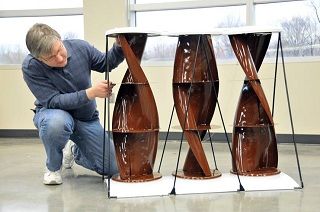What Is Marketing? Dealing with the Question As It Applies to WindStream – Leader in MicroWind
What is marketing? As I like to define the subject, marketing creates the environment in which profitable sales are most likely to occur. Obviously, this has dozens of ramifications, and raises dozens of different questions, including:
• What do we know about the workstyles and playstyles of certain groups of potential customers, and the unmet needs associated with those people and their activities?
• Based on this, what are we selling, and to whom? How do we describe it for maximum impact?
• What’s a price that will be attractive, given the nature and intensity of those unmet needs?
• Through what venues are our target market segments most likely to want to buy?
• What are the most effective and least expensive ways to generate awareness of what we’re selling, in which we can tell our story in the most compelling fashion possible?
• How are we going to succeed in translating initial awareness and interest into actual sales?
In the case of WindStream and its breakthrough in “microwind” (small, cost-effective wind turbines), we need to understand that customers who want a full return on a renewable energy investment in a short period of time need both above average wind conditions and higher than average electricity costs in the local region. If someone lives in “coal country,” where he pays well under the national average for electricity, and if he has no compunction about the damage he’s creating to the environment and public health represented by burning coal, he’s extremely unlikely to become a WindStream customer.
Having said that, Windstream already has received a large order of 10,000 units to be delivered to Brazil. Commercial electricity customers in Brazil, on peak, can pay as much as $2.00 per kilowatt-hour! That’s why those with even mediocre wind conditions are snapping these devices up faster than the company can build them.

